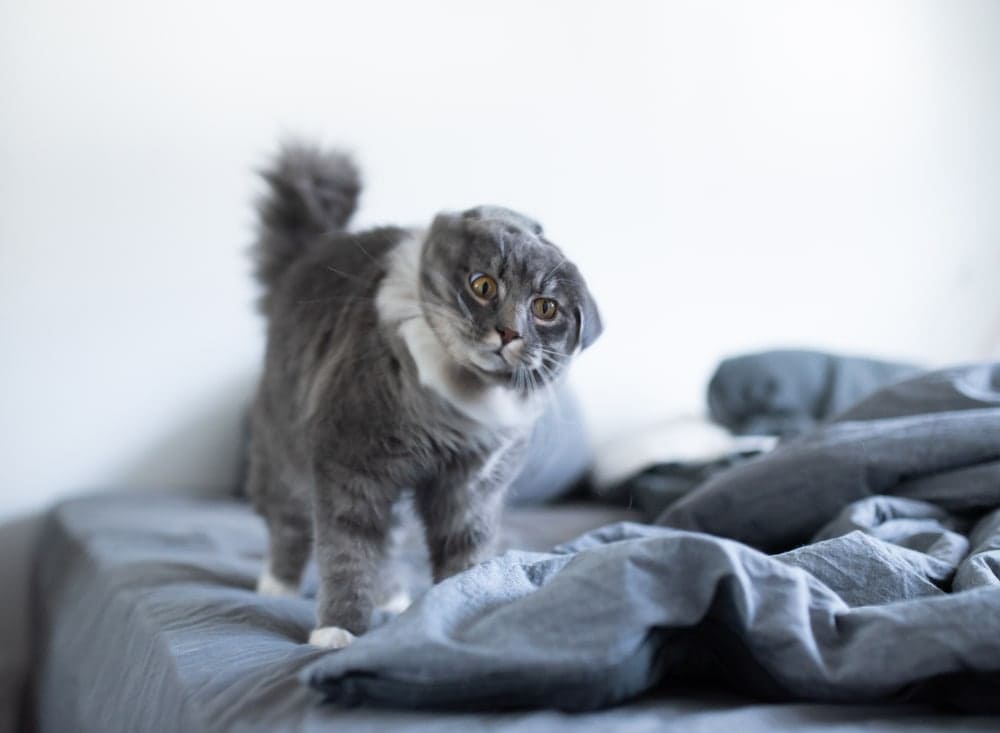
Cat Seizures Why it Happens and How to Treat It
Sometimes the cat may vocalise or have facial twitching. Vocalisations are involuntary and do not indicate pain. Often the cat will drool excessively, urinate, or defecate. The tonic portion of the seizure is usually very brief and gives way to the clonic phase of the seizure. Once the clonic phase begins the cat will have rhythmic movements.

Latest News The Healthy Pet Club
Myoclonic seizures are a hallmark of feline audiogenic seizures (FARS). Methods This prospective, randomised, open-label t. Objectives Currently, there are no published randomised, controlled veterinary trials evaluating the efficacy of antiepileptic medication in the treatment of myoclonic seizures.

Feline Audiogenic Reflex Seizures (FARS) International Cat Care
Types of Cat Seizures. Many people who are unfamiliar with seizures probably picture full-body shaking, foaming at the mouth, and loss of consciousness. Although this is common in cats, seizures can also exhibit different symptoms, and not all of them are obvious or violent. From most common to least, the types of seizures in cats include:

Why and How Cats Have Seizures Guildcrest Cat Hospital
Certain noises can trigger a variety of seizures, from generalized fits to short-acting twitches, or just a dazed moment. Correctly called FARS and more common in older cats, deaf cats, or Birmans, it's been dubbed 'Tom and Jerry Syndrome', referring to Tom's startled reactions to trouble! Can flea products cause seizures in cats?

Seizures in Cats (What You Need to Know) YouTube
This sign is a pre-requisite for a diagnosis of feline audiogenic reflex seizures (FARS). Generalized tonic-clonic. Absence seizures (or 'petit mal') - a temporary loss of awareness, staring vacantly into space and being unresponsive. Hearing loss or deafness Deafness: acquired. Decreased cognition. Weight loss. Incoordination/weakness.

Feline audiogenic reflex seizures (FARS)
FARS is a problem of older cats, which typically exhibit myoclonic seizures (brief, shock-like jerks of a muscle or a group of muscles) in response to certain high-pitched sounds. Both non-pedigree and pedigree cats (in particular, Birmans) may be affected.

Seizures in Cats Causes and Treatment… FirstVet
Objectives: This study aimed to characterise feline audiogenic reflex seizures (FARS). Methods: An online questionnaire was developed to capture information from owners with cats suffering from FARS. This was collated with the medical records from the primary veterinarian. Ninety-six cats were included.

Seizures in Cats What you need to know » Petsoid
Feline Audiogenic Reflex Seizures (FARS), also known as Tom and Jerry syndrome, is a rare but serious neurological disorder that affects cats. It is a form of reflex epilepsy brought on by certain noises, such as the sound of a can opening or plastic crinkling. The cat's quality of life may significantly decline due to FARS, which may be a.

How cat’s seizure looks like? YouTube
Safe. Vet Formula. Works Great. Liquid to Help Cat the Natural Way.

My cat having a seizure YouTube
FARS is a problem of older cats, which typically exhibit myoclonic seizures (brief, shock-like jerks of a muscle or a group of muscles) in response to certain high-pitched sounds. Both non-pedigree and pedigree cats (in particular, Birmans) may be affected.

Pin on Cat Skin Care
Objectives This study aimed to characterise feline audiogenic reflex seizures (FARS). Methods An online questionnaire was developed to capture information from owners with cats suffering from FARS. This was collated with the medical records from the primary veterinarian. Ninety-six cats were included.

Early Signs of Seizures in Cats Catipilla
FARS is characterized by the following: FARs is most common in cats that are 15 years of age and older. Seizure activity is preceded by a high-pitched sound. In many cases, the louder the noise is, the more severe the seizure activity is. Concurrent diseases are present in about 40% of cases.

cat seizure YouTube
Feline audiogenic reflex seizures (FARS) are a medical condition where loud sounds can trigger seizures in cats. FARS is more common in senior cats, with the average patient being 15 years old when diagnosed. It is also a genetic disorder in the Birman cat breed. There are three types of FARS seizures:

Mark Lowrie on Twitter "VET NEUROBET R is for… Reflex epilepsy. A good
Feline Epilepsy Both cats and dogs suffer from seizures, however the diagnostic and treatment approach for cats differ greatly from their canine companions, and, at times, it can seem frustrating and challenging. We can find many causes for Feline Epilepsy, from metabolic problems, toxins, or genetics.

Seizures in Cats PetCoach
This study aimed to characterise feline audiogenic reflex seizures (FARS). Methods An online questionnaire was developed to capture information from owners with cats suffering from FARS. This was collated with the medical records from the primary veterinarian. Ninety-six cats were included. Results

Cat Seizures Why it Happens and How to Treat It
Feline audiogenic reflex seizures (or FARS, also known as 'Tom and Jerry syndrome') is a recently discovered and important type of epilepsy in cats. It appears to be more common in older cats and Birmans, and is triggered by various high-pitched noises. Discovering FARS